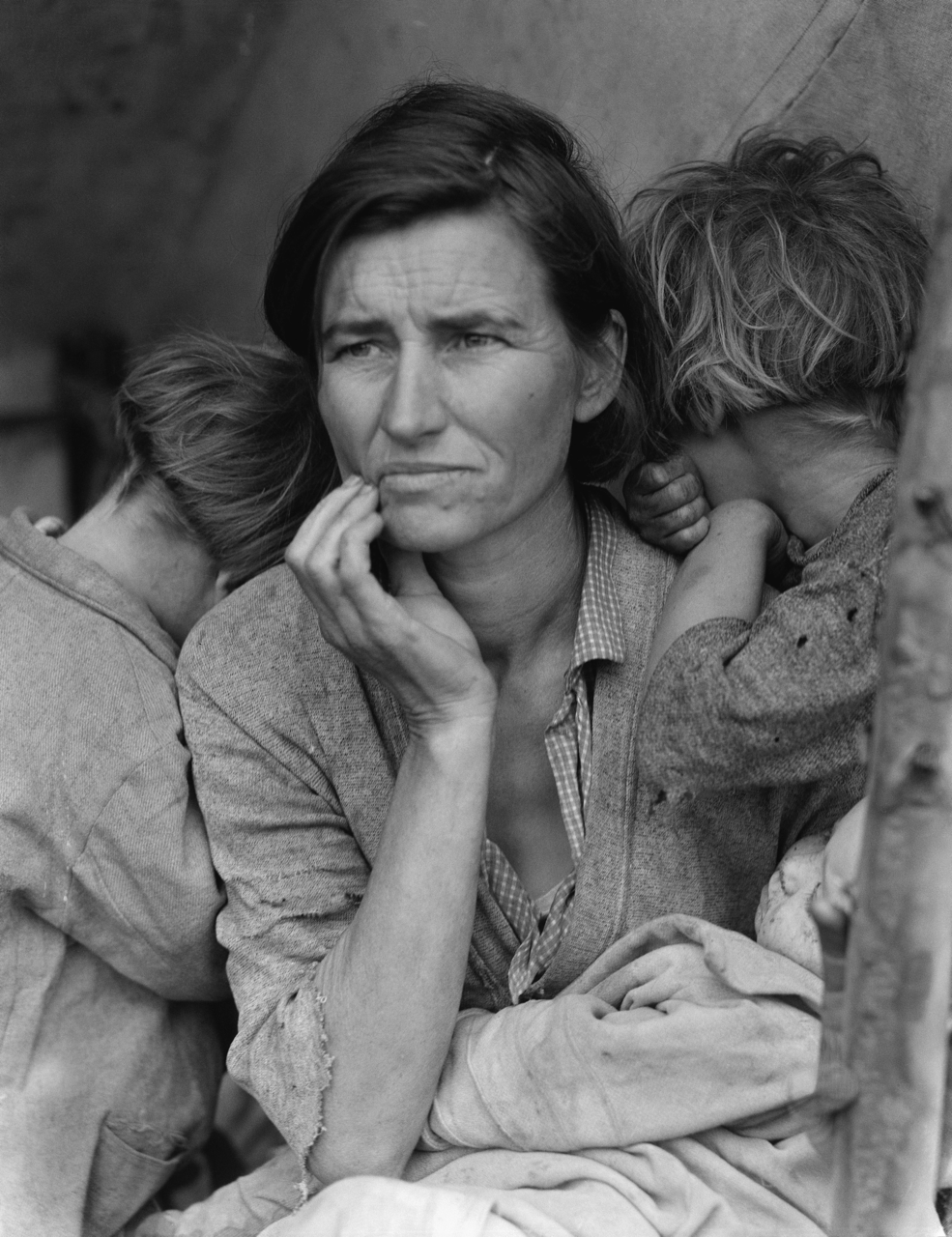
Dorothea Lange's iconic 1936 photograph of Florence Owens Thompson, Migrant Mother
Dorothea Lange (America, 1895–1965)
Migrant Mother
28.3 cm × 21.8 cm (11.1 in × 8.6 in)
1936
Collection of Museum of Modern Art, New York
In 1936, the photographer worked for the Farm Security Administration. At the request of the Roosevelt government, she took documentary photographs to document farmers' poverty during the Great Depression.
The woman holding her baby in her arms, like a Virgin and Child, is surrounded by two other children, little angels who turn their backs to us while leaning on their mother.
As soon as it appeared, this image went around the world and became the symbol of misery. Still, above all, the suffering and dignity of this mother with her forehead wrinkled by worry, her face melancholy yet determined. It shows the strength of mothers in the face of adversity.
Dorothea Lange has often told the story of this mythical photograph: a chance encounter with the 32-year-old mother of 7 working in a pea field in Nipomo, California, anxiously awaiting her husband's return, sitting by the side of the road.
It's only years later that we discover the truth about this photograph: the mother's name is Florence Owens Thompson, she's not a white farmer, yet, of Cherokee descent, she doesn't work in this pea field but her car broke down nearby and her husband is next door repairing it. She's not even a migrant, having lived in California for several years. Above all, she hates this photograph, which presents her in a way that is degrading to her, as a starving mother of a large family. Not only has she never received anything from this photograph, but Dorothea Lange, despite her promise, has never sent her a single print.
And yet, when she fell ill and her children were unable to pay the hospital bills, the memory of this photograph led to an outpouring of donations and, above all, letters of support, finally reconciling the family with this photograph.










